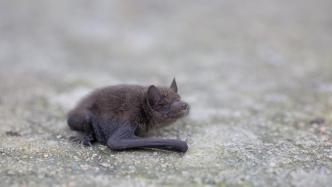

A newly published epidemiological research paper in the internationally renowned academic journal "Nature" warns that a study conducted by researchers shows that changes in climate and land use may promote the spillover of pathogens from bats to other animals.
In this study, an analysis of data collected in Australia shows that food shortages and loss of natural habitat have allowed bats to persist in human-inhabited areas, causing Hendra virus, a new zoonotic diseased) spillover to an intermediate host - the horse. The study suggests that understanding the link between habitat loss, climate change and spillover risk could help develop measures to prevent future pandemics.
According to the paper, zoonotic spillover refers to the transmission of a pathogen from animals to humans, generally through some kind of intermediate host. One such virus is Hendra virus, a bat-borne virus that primarily infects large fruit bats (the Australian flying fox). Hendra virus does not kill bats, but it can be transmitted to horses, and from there, as an intermediate host, to humans, causing severe or fatal disease. Previous research has found that land-use change may be linked to virus spillover from wildlife to humans, but the new study provides solid evidence for the underlying mechanism.
Peggy Eby of the University of New South Wales in Australia, Raina Plowright of Cornell University in the United States, and their research colleagues analyzed the data on land use change in subtropical Australia, bat behavior, Hendra A 25-year period (1996-2020) of virus spillover from bats to horses reveals that changes in land use and climate are driving bat populations to agricultural and urban areas.
The authors of the paper found that climate factors such as the El Niño phenomenon lead to food shortages for bats. After such events, bat habitats will be more close to human settlement areas that can provide food sources. Similarly, the loss of bats' natural habitats has allowed bats to inhabit areas closer to human life. Both of these factors are associated with an increased risk of Hendra virus spillover into horses. They point out that if the nearby remaining natural forest (the natural habitat of fruit bats) reaches the winter flowering period, the bats will leave the agricultural and urban areas, and the overflow phenomenon will not occur during these flowering periods.
The authors conclude that their findings shed light on a key process by which virus spillover occurs, from land use changes to bat behavioral changes in response to changes in food access, and that understanding the causes of virus spillover may provide guidance for actions to reduce virus spillover from bats.